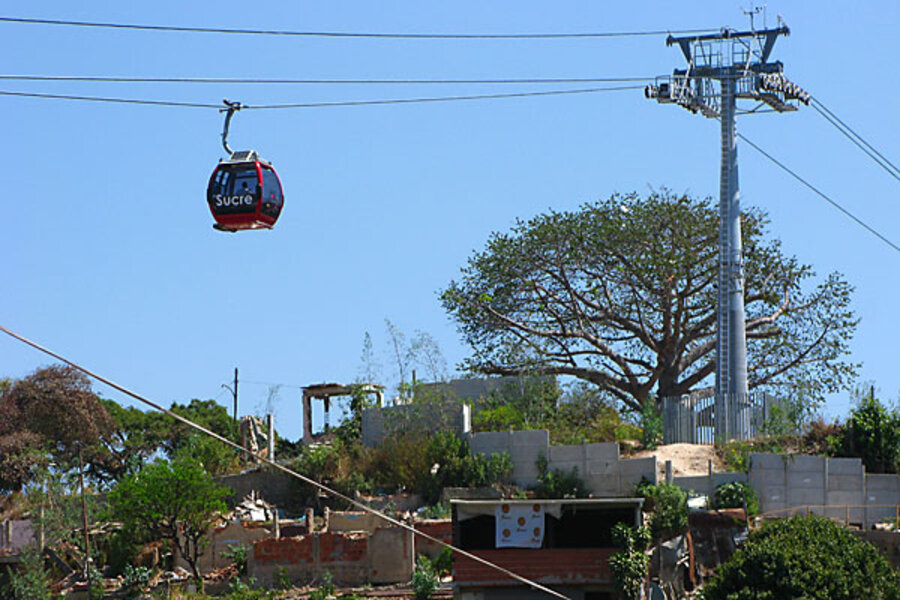In Venezuela, public transport is a gondola to a barrio
Loading...
| Caracas, Venezuela
• A local, slice-of-life story from a Monitor correspondent.
Cable cars as public transport systems are becoming increasingly fashionable in South America.
Medellín, Colombia opened its first line in 2006, while one is under construction in Rio de Janeiro, Brazil.
Venezuela unveiled its own “Metrocable” this year in the capital city, Caracas.
The government hopes some 15,000 residents a day will use the new gondola system to connect from San Agustin, one of Caracas’s poorest and most violent barrios, to the city’s Metro.
Already, thousands are taking advantage of it daily.
“It used to take me two hours to get to work,” says Pedro Fuentes, a resident of El Manguito, where one of the gleaming glass and concrete stations was erected. “Now I can get there in 40 minutes.”
But the government hopes the “Metrocable” will do more than just cut commuting hours. In Medellín, the system had a transformative effect on what was one of the continent’s most dangerous shantytowns.
With that aim in mind each station of the Caracas Metrocable will act as a community hub. One will have a gymnasium added to it. Another will act as a rehearsal studio for classical orchestras.
Cable cars are an ideal transport solution for South America with its mountainous topography and cities that are often ringed by shantytowns perched on steep hills, says Hubert Klumpnik of Urban Think Tank, the Caracas-based architecture firm behind the new gondola system.
“We believe that the barrios are not mountains full of houses but rather a house the size of the mountain itself,” he explains. “We know that by law a building of four floors needs an elevator and we translated that to a cable car system that would attend this ‘mega building.’ ”
But the work was not completed without criticism. It was delayed by more than a year and, at a cost $262 million, came in nearly five times over budget.





